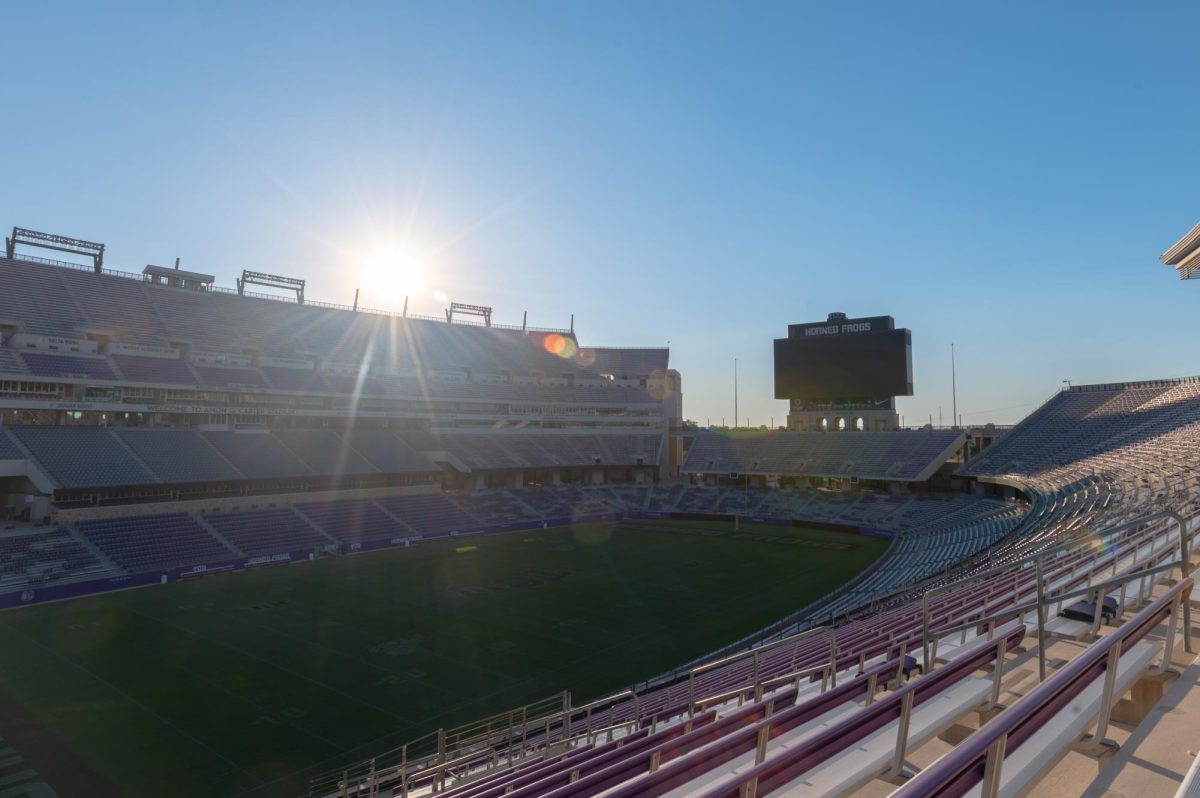The city of Fort Worth is waiting on the arrival of their application in becoming a qualified bicyclist-friendly community in acknowledgment of the small improvements the city has made to make roads more accessible for bicyclists. Earlier this year, Julia Ryan, the senior planner of planning and development for Fort Worth, submitted to the League of American Bicyclists an application to determine whether or not their actions qualified them to become a bicyclist-friendly city. These actions were the Bike Fort Worth Plan and the Master Thoroughfare Plan. The Bike Fort Worth Plan was proposed to the Fort Worth City Council in 2009 and adopted in 2010. Ryan said the bike plan had three specific goals that the city wanted to accomplish: First, to increase the number of bicyclists. Second, reduce the number of injuries and fatalities involving bicyclists. And lastly, to become a bicyclist-friendly community, which they hope to accomplish through their application to the League of American Bicyclists, an advocacy group for the biking community in the U.S The numbers have slightly improved since 2010, but not to the degree that Ryan hoped. Ryan said what makes it difficult for being determined a bicyclist-friendly community by the League of American Bicyclists is that there are no set guidelines that define what makes a city qualify because the qualifications vary between cities. “There’s not a cookie-cutter answer that says these are the items that we have to have in order to reach this designation,” Ryan said. “It really depends on the community, so it varies.” Randy Sullivan, a sales team member at Mellow Johnny’s, a local bike shop and social gathering spot for bicyclists, said there has been some progress in the changes being made. “The progression has been slow but moving in the right direction for cyclists,” said Randy Sullivan, sales manager at Mellow Johnny’s, a local bike shop and social gathering spot for bicyclists. Sullivan said that Fort Worth has improved in their development of becoming a bicyclist-friendly community in the past 15 years. “As compared to 15 years ago, this town is way more bicyclist-friendly,” Sullivan said. “I think the Trinity Trail has helped a lot as well as the advancement of local shops, thriving local economy and our recent mayor’s support of the local cycling scene.” The Master Thoroughfare Plan (MTP), which was adopted by Fort Worth this May, is an updated version of the bike plan adopted six years ago, Ryan said. The MTP is said to “provide a complete and connected, context-sensitive transportation system for all users that supports mobility, healthy living and economic benefit,” according to the city’s website. The MTP is based on a “complete streets philosophy,” which creates roadways to accommodate most, if not all, transportation methods: driving, biking, walking, and using public transportation. “It’s a really big departure from where we were,” Ryan said. “We had three cross sections that really only served motor vehicle traffic: wide lanes, narrow sidewalks.” The mileage of accessible bike lanes in Fort Worth has increased almost eightfold in the past six years; however, only an additional 5.1 miles have been added to all bike routes (shared lanes).
Through these plans, Ryan said that Fort Worth is looking to update their street design and manual, which hasn’t been updated since 1987. One of the design updates that will be first implemented is with intersections because they experience the most conflict in urban areas. Ryan said one design idea would turn them into protected intersections. Protected intersections, sometimes referred to as “Dutch intersections,” are intersections that allow vehicles, pedestrians, and bicyclists to safely travel on streets without causing conflict or injury. The idea was first sought out when American roadmakers saw how the Netherlands made their intersections safer for all road users. What makes protected intersections so safe is that they allow all road users to see each other clearly so they do not unintentionally drive, bike or walk into moving traffic. Some of the first U.S. cities to use protected intersections are Davis, California; Austin, Texas; and, Salt Lake City, Utah. “The thing about [a protected intersection] is that it’s nice and that it’s going to be safer for vehicles too because you’re slowing the speed down because of something new,” Ryan said. “And, when you see something new, you’re not going to learn from [it] at 40 mph. You’re going to have to slow down because there are things going on in your mind that you’ll need to be aware of.” With these plans, Ryan said taking elements from each of them would create an active transportation plan, which will help promote healthier ways of transportation, such as biking and walking. And, when it comes to safety, Ryan said for everyone to be alert at all times. “My personal recommendation is that everybody really needs to pay attention to what is going on, whether it is driving or biking or walking, that distracted driving or distracted walking, these are big issues that cause a lot of issues,” Ryan said. “Slow down, be friendly, these are things that in other communities have come by little easier than in Texas.” Ryan said the North Central Texas Council of Governments (NCTCOG) has developed a road safety education campaign called Look Out Texans that can help Fort Worth residents know their rights and responsibilities as road users. “I think the city of Fort Worth is definitely headed in the right direction with the addition of new river trail activity stops and locations along the Trinity as well as the addition of bike paths and specific bike lanes on city streets,” Sullivan said. Fort Worth will hear from the League of American Bicyclists on their application submission in November.



